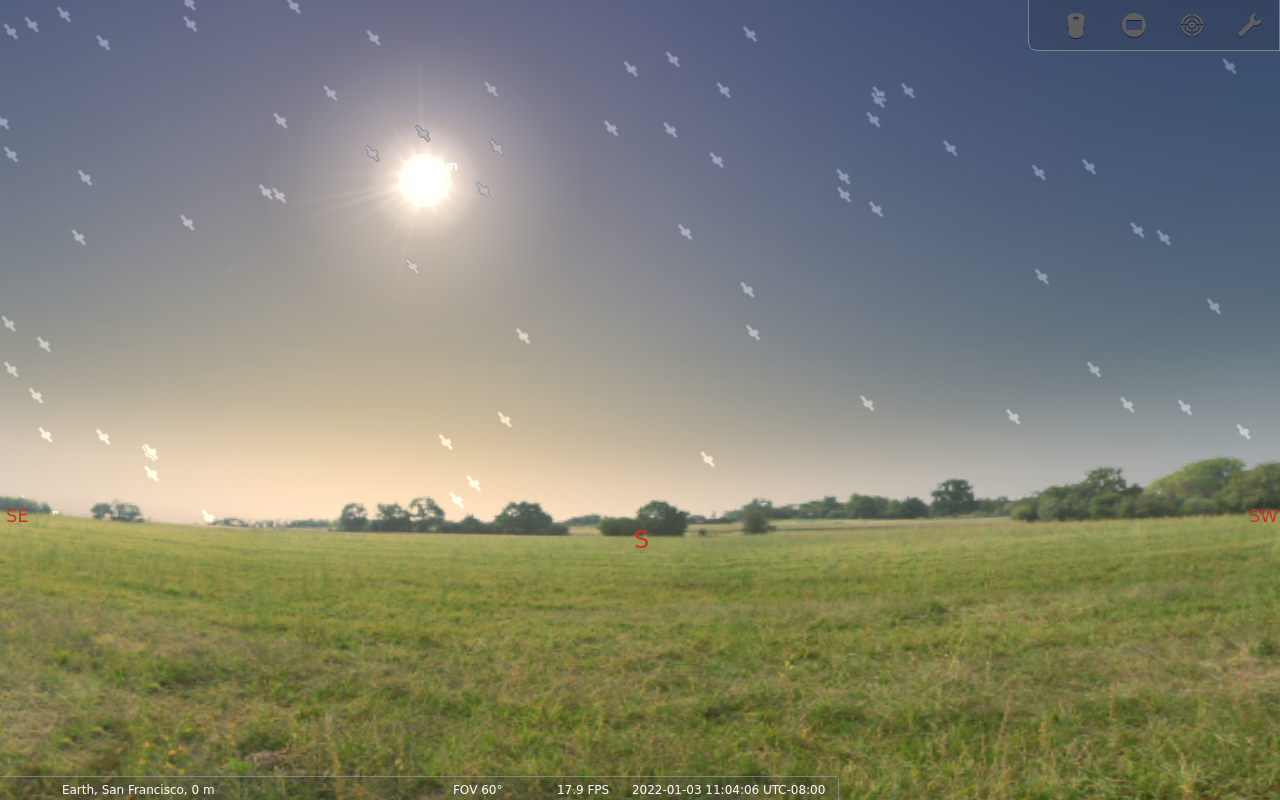LeoLabs, CelesTrak, SpaceTrack, and AstriaGraph
LeoLabs, CelesTrak, SpaceTrack, and AstriaGraph
As I mentioned before, I was immediately hooked once I saw LeoLabs’ visualization of objects in Low Earth Orbit (e.g., SpaceX’s Starlink constellation, the ISS, rocket bodies, and debris). I proceeded to research everything I could find about LeoLabs and other entities focused on satellite tracking.
One of the first things I tried out was Stellarium, an Open Source planetarium software I’ve been playing around with for a while now. Their satellite plugin is a really good resource, I’ve been studying that code in the last few weeks.

The satellite data used by Stellarium’s satellite plugin is from CelesTrak, the OG of satellite tracking, led by T.S. Kelso. The site has been up and running as CelesTrak since March 1998 and provides current and historical “two-line element set” (TLE) data for most satellites in the Satellite Catalog (SATCAT). It also provides a really cool visualization and a proxy that lets users query SpaceTrack data.
SpaceTrack is a service maintained by the United States Space Force. Its stated goal is to provide critical Space Situational Awareness (SSA) data for the worldwide Space Community. Anyone can create a SpaceTrack account and get access to their data via a REST API. Once you get access to the data, try out their Query Builder to explore the API and data.
AstriaGraph is a research project led by Moriba Jah, a fellow dreadhead. They aim to aggregate all sources of Space Domain data (including unstructured data like Twitter posts) into an “ontology-based knowledge graph” to improve SSA. Their visualization is really impressive and displays data from the following sources:
- DigitalGlobe
- JSC Vimpel
- LeoLabs
- Planet
- SeeSat-L (see also https://www.prismnet.com/~mmccants/tles)
- Union of Concerned Scientists
- SpaceTrack
LeoLabs is a private company (Series B startup with less than 90 employees at this time) that created a global Phased-Array Radar network capable of tracking the ~18,000 objects in Low Earth Orbit that are 10cm or bigger. These include the ISS, active and defunct satellites, and debris like spent rocket bodies and shrapnel created by Anti-Satellite Tests (ASAT). LeoLabs provides customers with an API that can be used to access their data, and services like Collision Avoidance, which satellite operators can use to maneuver their fleet out of harm’s way. LeoLab’s newer radars are sensitive enough to identify LEO objects as small as 2cm. Data collected by their radars is available via their API in roughly 6 minutes (metrics).
It’s been very fun researching these topics, and I hope this summary is helpful to others!